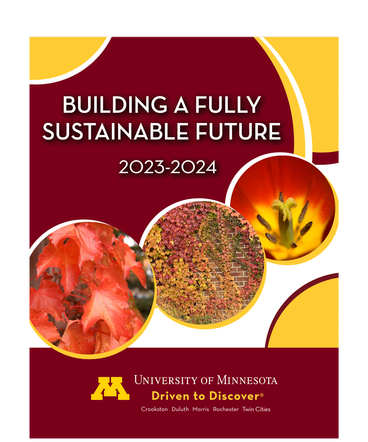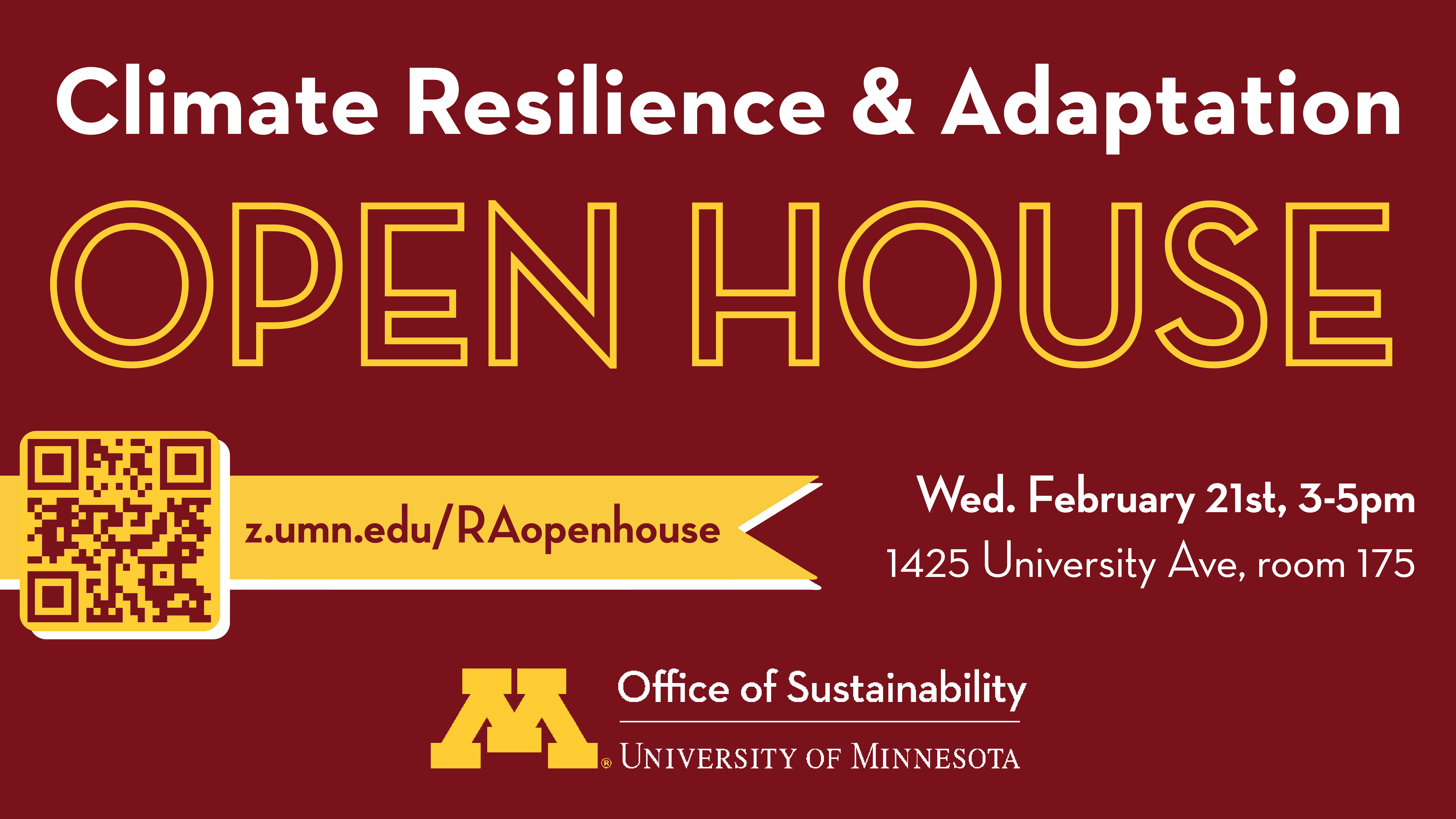What is your role at the University? What do you do with stormwater management?
Cathy Abene is the Principal Civil Engineer for the Energy Management Unit, part of the water utilities area. Her colleague, Lauren Wimler, also works in this division to manage the water, sewer, and stormwater utilities on campus. Along with a crew of plumbers and laborers, they oversee the operations, maintenance, system planning, design, and construction of stormwater systems. Further, Abene’s role is to manage the water resources on campus, from sanitary sewer management to runoff management.
A lot of the work that they, and many others, do goes unseen because stormwater management systems are often driven underground due to the competing needs of the land.
Stormwater runoff is generated from rain and snowmelt events that flow over land or impervious surfaces, such as paved streets, parking lots, and building rooftops, and does not soak into the ground. The runoff picks up pollutants like trash, chemicals, oils, and dirt/sediment that can harm our rivers, streams, lakes, and coastal waters. To protect these resources, communities, construction companies, industries, and others, use stormwater controls, known as best management practices (BMPs). These BMPs filter out pollutants and/or prevent pollution by controlling it at its source." (EPA)
The storm sewer system is very old and has undergone a shift in perspective. What was once thought to be plainly waste water to be sent to the Mississippi River, is now understood as an opportunity to work with the land to reuse, repurpose, and treat stormwater for multiple uses. They also understand the negative effects on water quality that comes from untreated stormwater to local water bodies, like the Mississippi. The shift in perspective with stormwater came with the introduction of the Clean Water Act, to view stormwater not as a waste, but as an opportunity. The stormwater management system was retrofitted to fulfill these new opportunities.
Now their work is to oversee the redevelopment of stormwater system networks to ensure they build in measures to treat stormwater before it is released into the river. They monitor the campus systems, their performance, and the development of new projects to meet water quality standards and performance requirements. After the system is built, they perform routine inspections and conduct maintenance. The University is leading the work to look holistically at the built environment and stormwater, to invest in the area and bring the maximum benefit.
The scope of their work is very large because there are all kinds of stormwater systems on campus. Many different stormwater systems are in place before the stormwater gets to the receiving water. The goal is to have the stormwater go through multiple treatment systems, including many natural treatments, before it's drained. This helps reduce pollutants in the water, improve the water quality and health of the drainage basin, the Mississippi River, and also slows the water down so the pipes can keep up.
Describe the stormwater management on campus?
The main mission is to work with the land to collect, treat, and work with stormwater. They strive to use stormwater and rainwater for multiple uses- toilets, irrigation, cooling etc. They treat stormwater for: water quality, to manage the rate of water released to the storm system, and for volume reduction. The quality of the water deals with suspended solids and phosphorus reduction. Managing the rate of water allows the water to slowly release to the storm sewer and prevents overflow of the system. Volume reduction entails keeping water onsite, infiltrating it, and using it for a different purpose. The water can be used for the various Rain Garden systems on campus, large underground storage captures systems, or go through treatment for other uses.
What are some specific Stormwater Features?
One of the most noticeable and popular stormwater systems on campus is the Huntington Bank Stadium Rain Garden which has won awards. Metro Blooms awarded UMN with its annual “Best Public Rain Garden” award in 2009. The Stadium itself, and all the stormwater surrounding the area, drains to the dry pond pipe. About 40 acres of land is being drained to this system.
Another popular stormwater system is at the Bell Museum. The Bell has many stormwater systems on it, including many treatments on site. The treatment systems are the ponds, rain gardens, permeable pavers, etc. that are all connected to collect and treat the water. If the stormwater overflows, there's a ditch that runs along the Bell Museum and Cleveland Street, so the water can enter the campus system and drain to the basin complex. The water enters pipes and gets pretreated before it enters the Serita wetland. When building the Bell Museum they designed these systems so stormwater could be treated multiple ways and enter multiple stormwater systems, instead of being treated once and only able to enter through the pipes. The water is pretreated to collect sediment, pollutants, dirt, trash etc. from the pavement and landscape, to eliminate these pollutants from entering the Mississippi. More stormwater features on the Minneapolis campus are underground pipes used as a catch basin for storm and rainwater. On Pleasant Street, about 7 acres of runoff flows through pipes that drain into a rain garden. They have pavers on top with spacers, cross sections below, to bring rainwater in, filling up the tree trenches and giving the trees the first chance to use the water. This is a natural system that uses gravity to direct the flow of water. These efforts help to alleviate problems with flooding, erosion, and pollution from stormwater. Overall, there are lots of opportunities that the University is taking to treat stormwater.
What about pollution control?
They are working to achieve water quality standards that are required by the Minnesota Pollution Control Agency (MPCA). The requirements by the MPCA for new development projects are to reduce suspended solids (sand, dirt, trash, etc.) from entering the sewer system by 80%. Another requirement is to reduce the amount of phosphorus by 60%. The volume reduction requirement for new development projects requires keeping 1 inch, over the entire impervious area, of the water onsite. They must keep 1 inch of water from entering the storm sewer by infiltrating or reusing it.
It should be noted that there are substantial amounts of impervious areas that do run through some sort of stormwater system. However, more stormwater features are being added with new development and redevelopment of the campus. Adding more/new features that treats stormwater, which would have otherwise been sent to the river untreated.
Stormwater is reused for 3 main purposes. The idea is that when you use stormwater for something, you are reducing the amount of potable water needed and reducing the amount of stormwater being released into the Mississippi. Stormwater is used for: toilets in 17th Ave residence hall, a landscape irrigation system coming soon for Campbell Hall, and collecting stormwater to be used in the process that makes chilled water for cooling. They had the first toilet flushing system in the state to use stormwater. They also had the first cooling tower makeup water systems in the state. Because cool air is needed for human comfort, and cooling systems are very resource intensive, using stormwater helps make these systems more sustainable. Chilled water is needed for cooling buildings, however, a lot of water is lost as it evaporates in the process. Instead of using and wasting potable drinking water, the cooling tower uses rain/stormwater. Rainwater runoff is collected into storage systems underground. They use stormwater first to reduce the amount of water that would have otherwise been needed. 3 million gallons of stormwater has been used to save the need for potable water.
Stormwater and the MS4 Permit requirements
The University of Minnesota maintains Municipal Separate Storm Sewer System (MS4) permits for the Twin Cities (UMTC) and Duluth (UMD) campuses. These permits require the University to implement Best Management Practices (BMPs) as detailed in the campus-specific Storm Water Pollution Prevention Program in addressing storm water runoff from these campuses, with the goal of reducing pollutants to the maximum extent practicable.
The idea originates in the Clean Water Act to reduce point source pollution and non-point sources (runoff). All land in urbanized states produces runoff. They work to understand, prevent, minimize, and mitigate the effects of urban runoff from the built environment. The urban stormwater efforts focus on research and technology transfer (Extension education) to industry professionals, practitioners, and managers at all levels of government and within private industry to prevent and mitigate the effects of runoff from the built environment.
The permit allows for some of the runoff to leave our campus. The permit contains a public outreach and education piece covering how to teach and engage the audience to educate them on stormwater. They have been working with Hannah Lauber, the Communications Associate at the Office of Sustainability, to define the audience and goal of the education and outreach program. The audience are the students who live on campus, and the goal is to educate the students on campus on the water cycle at the University and individual impacts to water quality. The University intercepts each drop of water that moves through the urbanized land, and tries to make it cleaner for stormwater and runoff. They interrupt the urban water cycle for a better stormwater treatment system. As the hydrologic cycle tells us, water comes from and goes to the river. It is a finite cycle of all the same water, and our actions have a strong impact.
Another aspect of the MS4 permit is the inspection, maintenance, and internal training they go through. They must train staff on illicit discharge detection and elimination, among other things. It also influences how they manage the lands, their development requirements, and construction projects. Overall, the permit provides processes to stay on top of all stormwater activities at the University.
The Stormwater Management team call themselves ‘stewards of the land and University finances’ because they must balance their budget and environmental issues. Their approach uses sustainability/systems thinking at large to holistically manage stormwater.





